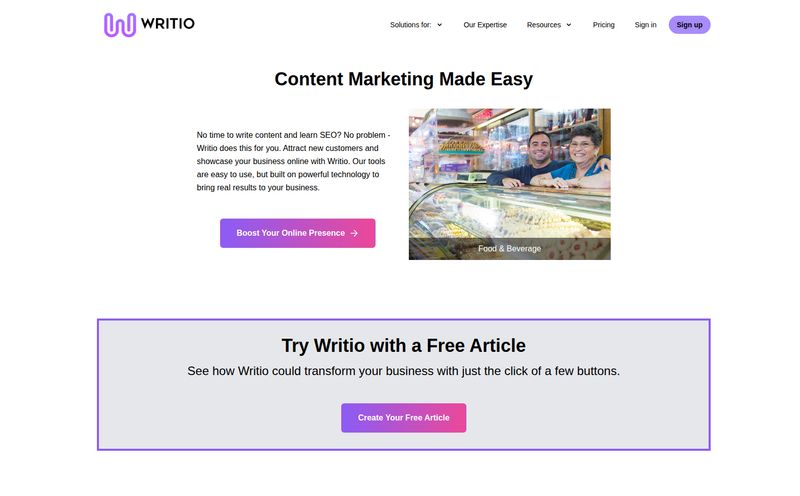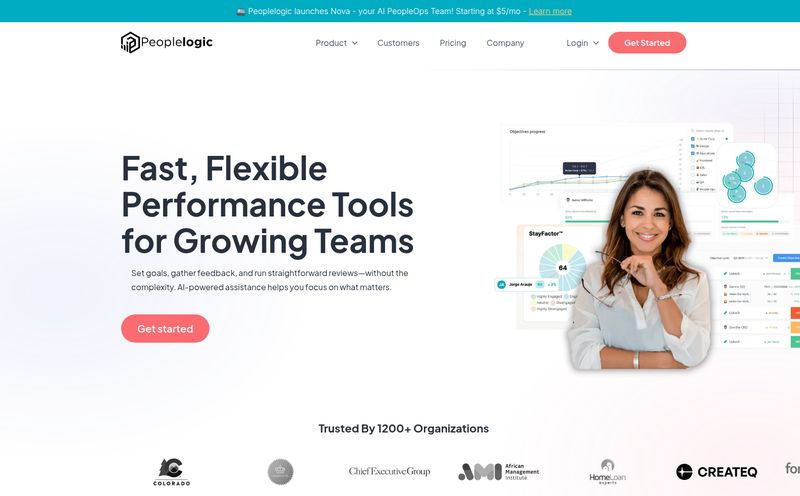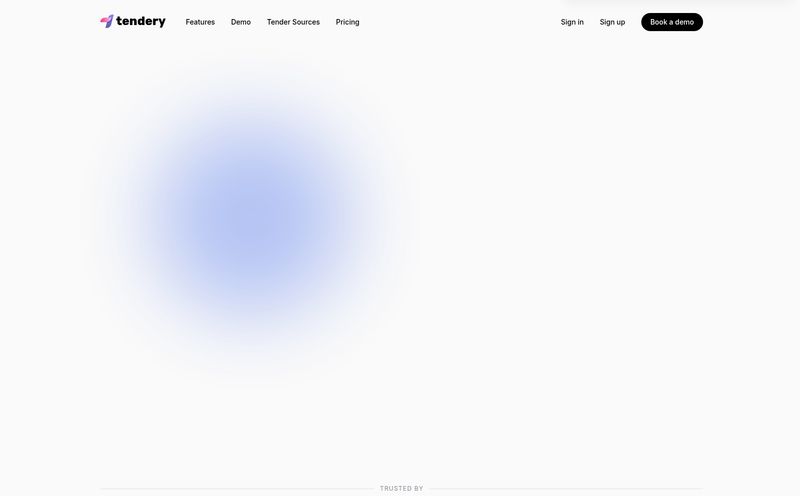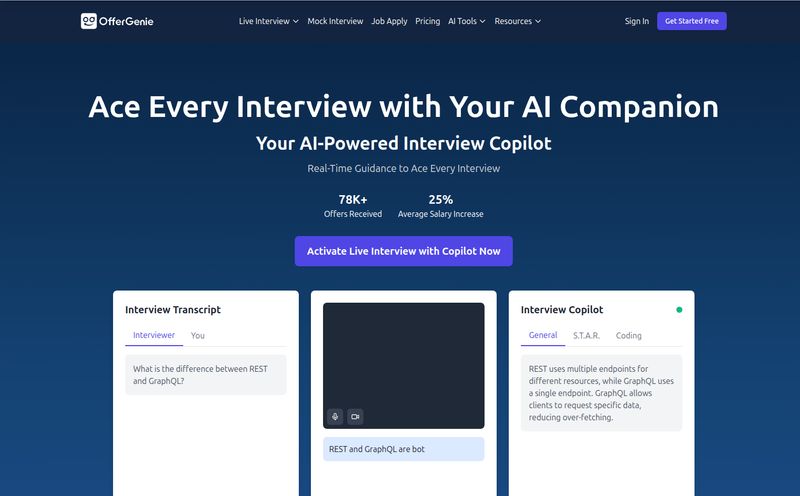If you’re in the user research game, your toolkit probably looks a bit like a Frankenstein's monster. You’ve got one tool for surveys, another for usability testing, a third for card sorting, and you’re probably wrangling spreadsheets and Google Docs to stitch it all together into something that vaguely resembles a report. It’s a chaotic, tab-switching nightmare. I’ve been there. We’ve all been there.
So, when a new platform comes along waving an “all-in-one” flag, my inner skeptic raises an eyebrow. But my inner optimist—the one who dreams of a single, clean dashboard—leans in a little closer. The latest tool to catch my eye is called Fred, billing itself as “The User Research Shepherd.”
A shepherd, huh? Guiding your lost, scattered data points into a neat, orderly flock. I have to admit, I like the metaphor. But does it live up to the name? I decided to take a look under the hood.
So What Exactly Is Fred?
At its core, Fred is a collaborative user research (UXR) platform designed to pull your entire research process into one place. From brainstorming and ideation, through running the actual studies, to analyzing the data and building those all-important reports for stakeholders, Fred aims to be the single source of truth for your product team.
It’s built for user researchers, by user researchers (or so it seems), and it shows. The platform seems to get the pain points. It knows that research isn’t just a series of isolated tasks but a continuous loop. The idea is to stop the data leakage that happens when you’re constantly exporting from one app and importing to another.

Visit Fred
Instead of just being a tool, it presents itself as a companion. A friendly, reliable one named Fred. Let's see what this companion can actually do.
The Core Features That Caught My Attention
An all-in-one platform is only as good as its individual parts. Here’s where I think Fred really shines, and where it has some room to grow.
A Full Buffet of Research Methods
This is the big one. The sheer variety of research methods available out of the box is impressive. We're talking about the greatest hits of UXR, all living under one roof. You can run:
- Usability Testing: Both moderated (via their 'User Sphere') and unmoderated tests to see how people actually interact with your product.
- Card Sorting: To understand users' mental models and improve your information architecture. A classic for a reason.
- Tree Testing: The perfect follow-up to card sorting, to validate if your new structure actually works. Can people find the thing?
- First Click & 5-Second Tests: Quick, powerful tests to gauge first impressions and the effectiveness of your design's visual hierarchy.
- Surveys: Because sometimes you just need to ask.
- Preference Tests: Pitting two designs against each other in a brutal, no-holds-barred cage match. May the best UI win.
Having all these integrated means you can build a single, comprehensive study that combines methods. No more sending users to three different links. Hallelujah.
Real-Time Collaboration with User Sphere
Fred's “User Sphere” is its answer to live, collaborative testing. It’s an interactive, real-time tool for moderated sessions. Think of it as your digital observation room where you can facilitate the test, and your team can watch and take notes dynamically. This is a huge step up from a messy Zoom call with a shared Google Doc. Centralizing feedback during a live session is one of those small things that makes a massive difference to your workflow.
From Raw Data to Polished Reports
Anyone who's spent a full day just copying and pasting screenshots into a PowerPoint deck knows the pain of reporting. Fred’s Report Builder aims to kill that pain. You can import your study data, highlights, and visualizations directly into a report. This isn’t just about saving time; it’s about maintaining data integrity. You’re pulling from the source, not a poorly transcribed note.
This feature, for me, is a potential game-changer. Good research is useless if it’s not communicated effectively, and streamlining this last mile is critical.
See What Users Really Do
Beyond what users say, Fred helps you see what they do. It includes advanced behavioral tracking tools like session recordings and heatmaps. These are staples in the world of CRO (Conversion Rate Optimization) and seeing them fully integrated into a UXR platform is fantastic. You can watch a recording of a user struggling and see exactly where their cursor hovers in confusion. That's powerful, qualitative gold, and it's GDPR-compliant, which is a big relief.
Let's Talk Money: The Pricing Breakdown
Okay, the features sound great, but what’s the damage? Fred uses a pretty standard tiered SaaS model. The good news? There's a genuinely useful free plan.
Here’s a quick look at their monthly pricing:
| Plan | Price (Monthly) | Key Features |
|---|---|---|
| Sprout | Free | 1 seat, 1 active project, 2 studies/project, 5 methods/study. Great for dipping your toes in. |
| Growth | €87 /mo | 5 seats, 5 active projects, 10 studies/project, 15 methods/study, 5 report exports/month. Ideal for small teams. |
| Thrive | €449 /mo | 15 seats, 15 active projects, 30 studies/project, unlimited methods & exports. Built for larger orgs. |
Note: They also offer yearly plans which give you a discount.
My take? The Sprout (Free) plan is not just a token gesture. For a freelancer or someone wanting to run a small, personal project, it's perfect. You get access to the core functionalities without dropping a dime. The limits are real, but they're reasonable.
The Growth plan seems like the sweet spot for most startups and small-to-medium-sized businesses. The jump to the Thrive plan is substantial, but for large organizations juggling dozens of projects, the unlimited nature of it could easily justify the cost by consolidating their existing tool stack.
A Reality Check: What's Still on the Horizon?
Alright, time for some real talk. Fred is still in Beta, and it shows. As I browsed the feature list, I noticed a few rather important ones marked with that tantalizing but slightly frustrating phrase: (Coming Soon).
These aren't minor features, either. We're talking about:
- Insights & AI Sentiment Analysis: Tools to automatically identify trends, themes, and sentiment in your qualitative data. This is a huge time-saver that's not here yet.
- Tester Panel: The ability to recruit and filter participants directly from Fred's own pool. For now, you'll have to bring your own users (BYOU).
- Cloud Drive Integration: Syncing with Google Drive and OneDrive. A big quality-of-life feature that's still on the roadmap.
This is the main drawback for me right now. The promise of Fred is incredible, but a few of its most powerful promised features are still just that—promises. If you desperately need a built-in tester panel or AI analysis today, you might have to wait. It’s a classic early-adopter's dilemma: jump in now and grow with the tool, or wait until it’s fully mature?
My Final Verdict: Is Fred Your New UXR Best Friend?
So, after all that, what’s the verdict? I'm genuinely optimistic about Fred. It gets so much right. The user experience of the platform itself is clean, the suite of available research methods is comprehensive, and the focus on collaboration and streamlined reporting addresses some of the biggest headaches in the UXR field.
It feels like a tool that could truly become the central hub for a product team's research efforts, saving time, money, and sanity by eliminating the need for a half-dozen other subscriptions.
However, the “Coming Soon” labels are a significant caveat. It’s like buying a fantastic house where a few of the rooms are still under construction. You can see the potential, but you can’t use them just yet.
Who should try Fred right now?
Small to mid-sized teams who already have a way to source their own participants and are looking to consolidate their testing and reporting tools. The free plan makes it a no-brainer to at least try for a small project.
Who might want to wait?
Teams who are heavily reliant on a built-in recruitment panel or who are looking for advanced AI analysis to help with large volumes of qualitative data.
Fred is a promising, ambitious platform. It’s a user research shepherd that’s already got a good portion of its flock in order. Once those final, powerful features arrive, it might just become an indispensable leader in the field.
Frequently Asked Questions
- How does support work on Fred?
- They state that support is provided directly by the authors who worked on the project. This suggests a more personal, expert level of support, which is a nice touch, especially for a tool in Beta.
- Can I use Fred with my whole team?
- Absolutely. The different pricing plans (Growth and Thrive) are designed specifically for teams, offering multiple seats and a higher volume of projects and studies to facilitate collaboration.
- What is the refund policy?
- They offer a 30-day refund for an annual subscription and a 7-day refund for a monthly subscription if you're unhappy with the purchase. It's a fairly standard and reasonable policy.
- Is the free "Sprout" plan good enough for freelancers?
- In my opinion, yes. For a single user working on one main project at a time, the free plan offers a fantastic way to access a professional suite of UXR tools without any cost. The limitations are manageable for smaller-scale work.
- What if I need more projects than my plan allows?
- You would need to upgrade to the next tier. The plans are structured with clear limits on active projects, so you'd have to choose the plan that best fits your typical workload.
- Are the "Coming Soon" features a guaranteed addition?
- While it's listed on their public-facing site, in the world of software development, roadmaps can change. However, for features as significant as a tester panel and AI analysis, it's highly likely they are a top priority for the development team.
Reference and Sources
For the most current information on features and pricing, please visit the official Fred website and its associated pages.
- Fred Official Website: https://uxrshepherd.io/
- Fred Pricing Page: https://uxrshepherd.io/#pricing



